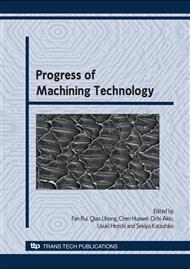p.658
p.662
p.667
p.672
p.676
p.680
p.684
p.690
p.694
The Optimization of Processing Parameters and Experimental Investigation on Ni-Based Components Fabricated by Laser Cladding
Abstract:
The optimization of processing parameters for laser cladding process based on Statistical Analysis System (SAS) software was investigated and the experimental investigation on Ni-based alloy components fabricated by laser cladding was carried out. The influences of the main processing parameters on the surface quality were analyzed, and the Ni-based components with superior surface quality were obtained by employing the optimum set of parameters. The surface morphology and microstructure of the components were analyzed. Results indicate that the surface of the cladding is rather smooth and the claddings have a unique microstructure consisting of primary dendrite. The laser cladding layer with integrated melt interface and without reheat cracking can be obtained by optimizing the process variables. The investigations show that the components fabricated by laser cladding process have better mechanical properties than that of the conventional manufacturing technology.
Info:
Periodical:
Pages:
676-679
Citation:
Online since:
February 2009
Authors:
Price:
Сopyright:
© 2009 Trans Tech Publications Ltd. All Rights Reserved
Share:
Citation:


